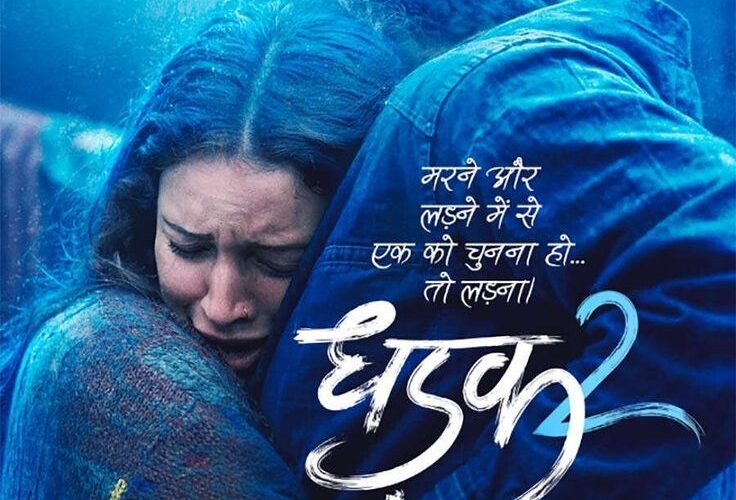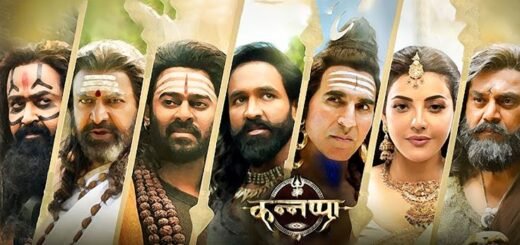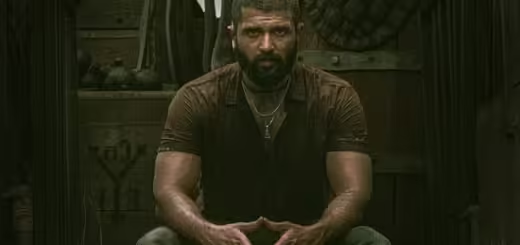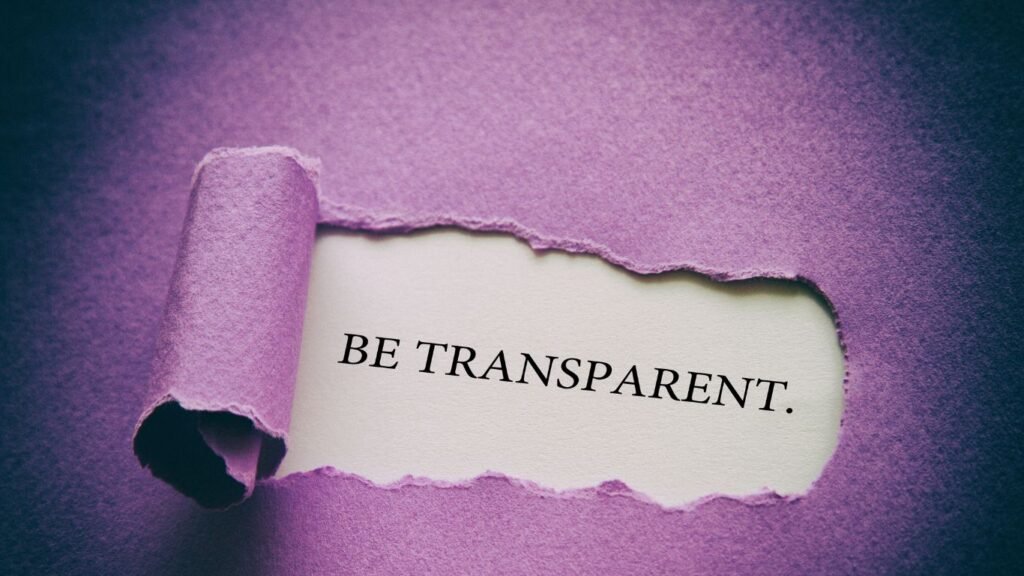Dhadak 2 Review: Bold Take on Love and Caste System

Bollywood’s much-anticipated Dhadak 2 finally hit theatres on August 1, 2025, marking the return of a franchise that began with the 2018 release Dhadak. Unlike its predecessor, which was primarily a romantic drama, Dhadak 2 is darker, socially conscious, and politically charged. Directed by Shazia Iqbal, the film tackles the sensitive subject of caste discrimination while portraying an intense and forbidden love story.
Background and Production
Dhadak 2 is not a direct continuation of the first film but rather a spiritual successor. The first Dhadak, starring Janhvi Kapoor and Ishaan Khatter, was a remake of the Marathi film Sairat and primarily focused on young love crushed by societal norms.
The sequel takes its inspiration from the critically acclaimed Tamil film Pariyerum Perumal, adapting its core storyline to a Madhya Pradesh setting. Director Shazia Iqbal brings authenticity to the narrative by showing the harsh realities of caste discrimination in educational institutions and rural India.
The production of the film was surrounded by multiple delays. Initially scheduled for late 2024, the release was pushed to February 2025 and finally to August 1, 2025, following Central Board of Film Certification (CBFC) cuts that reduced explicit caste references and violent sequences to receive a U/A rating.
Plot Summary
Dhadak 2 follows the story of Neelesh, played by Siddhant Chaturvedi, a bright law student from a Dalit background who becomes the first in his family to enter a prestigious university. There, he meets Vidhi, played by Triptii Dimri, a young woman from an influential upper-caste family.
Their love story unfolds in the shadow of systemic oppression. What begins as a tender college romance soon spirals into a dangerous conflict with Vidhi’s family and community, who are unwilling to accept a relationship that challenges deep-rooted caste hierarchies.
The first half of the film balances college life, flirtatious moments, and budding romance with the looming tension of social differences. The second half shifts to a grimmer, more tragic tone, depicting harassment, intimidation, and social isolation that escalates toward an emotionally charged climax.
Themes and Social Commentary
The film bravely shines a light on caste-based discrimination, a topic often underexplored in mainstream Bollywood. It doesn’t just show overt violence but also captures the microaggressions and systemic biases faced by marginalized communities:
- Campus Prejudice: Neelesh experiences casual slurs, isolation, and hostility in college.
- Family Honor vs. Individual Choice: Vidhi’s family prioritizes societal approval over her happiness.
- Social Repercussions: The film mirrors real-life instances of honor-based harassment and tragedies in educational institutions.
Shazia Iqbal ensures that romance is only one part of the narrative, with the larger focus on how love struggles to survive in a divided society.
Performances
Triptii Dimri as Vidhi
Triptii Dimri delivers a career-defining performance. She transitions seamlessly from an innocent, love-struck girl to a young woman forced to confront the harsh realities of privilege and oppression. Her emotional scenes, particularly in the second half, have been widely praised as raw and compelling.
Siddhant Chaturvedi as Neelesh
Siddhant Chaturvedi matches her intensity with subtle, grounded acting. He captures the emotional burden of a young man navigating love, ambition, and systemic prejudice. His body language and silent expressions communicate as much as his dialogues.
Supporting Cast
The supporting actors, particularly those playing Vidhi’s family members, convincingly portray the oppressive social machinery. Their presence amplifies the tension without turning into caricatures.
Direction and Storytelling
Director Shazia Iqbal deserves credit for boldly addressing caste violence in a mainstream Bollywood release. Her storytelling style is unflinching and rooted in realism:
- The first half is intentionally lighter, luring the audience into the comfort of a typical college romance.
- The second half sharply pivots to emotional intensity and social confrontation.
While the narrative structure is effective, the pacing occasionally drags, particularly during the middle portion, where the screenplay lingers on repetitive instances of harassment. However, the climactic sequences leave a lasting emotional impact.
Technical Aspects
Cinematography
Sylvester Fonseca’s cinematography captures the visual contrast between the serene beauty of Madhya Pradesh and the grim realities of caste divides. College corridors, rural streets, and dramatic rain sequences create a poetic yet unsettling visual tone.
Music and Background Score
The music of Dhadak 2 is more functional than iconic. Unlike the first Dhadak, which had instantly memorable songs like “Zingaat,” this film opts for a subdued soundtrack. The standout track, “Bas Ek Dhadak”, reflects the emotional turmoil of the leads but doesn’t achieve chartbuster status.
The background score effectively enhances the tension, especially during moments of social confrontation and tragedy.
Editing
The film is well-edited in high-intensity scenes, though certain portions in the first hour could have been crisper. Charu Shree Roy and Omkar Uttam Sakpal’s editing ensures the emotional beats land well in the final act.
Audience and Critical Response
The film has generated polarized reactions:
- Positive Feedback:
- Audiences praised its social message and emotional impact.
- Triptii Dimri’s performance is widely celebrated as her best work.
- Urban audiences in metro cities appreciated the realism and bravery of the film.
- Criticism:
- Some viewers found the story predictable and emotionally draining.
- Fans of the original Tamil film felt this adaptation lacked the raw intensity and musical magic.
- The pacing issues in the first half were frequently noted.
Overall, critics have given it mixed-to-positive reviews, ranging from 2.5 to 4 stars out of 5.
Box Office Performance
The opening day collection of Dhadak 2 was modest, earning around ₹1.2 crore on Day 1. This was lower than expected, primarily due to:
- Stiff competition from Son of Sardaar 2 and Saiyaara, which dominated screens.
- Limited mass appeal, as the film’s serious social theme caters to a more urban and niche audience.
Analysts suggest the film’s success will depend on word-of-mouth publicity, especially in urban multiplexes. If positive feedback continues, the film could gain momentum over the weekend.
Strengths and Weaknesses
Strengths
- Bold, socially relevant storytelling
- Powerful lead performances
- Authentic portrayal of caste realities
- Strong emotional resonance in the second half
Weaknesses
- Slow pacing in parts
- Predictable storyline for audiences familiar with the original
- Average soundtrack lacking commercial appeal
Final Verdict
Dhadak 2 is a bold and thought-provoking drama that dares to confront uncomfortable social truths while telling a heartbreaking love story. It may not have the musical charm or mainstream appeal of its predecessor, but it succeeds as cinema with a conscience.
If you are looking for meaningful storytelling, stellar performances, and emotional depth, Dhadak 2 is worth a watch. But if you expect a lighthearted romance or a mass entertainer, you might find it too heavy and predictable.
Overall Rating: 3.5/5
A socially relevant film that will resonate with audiences seeking depth over spectacle.













